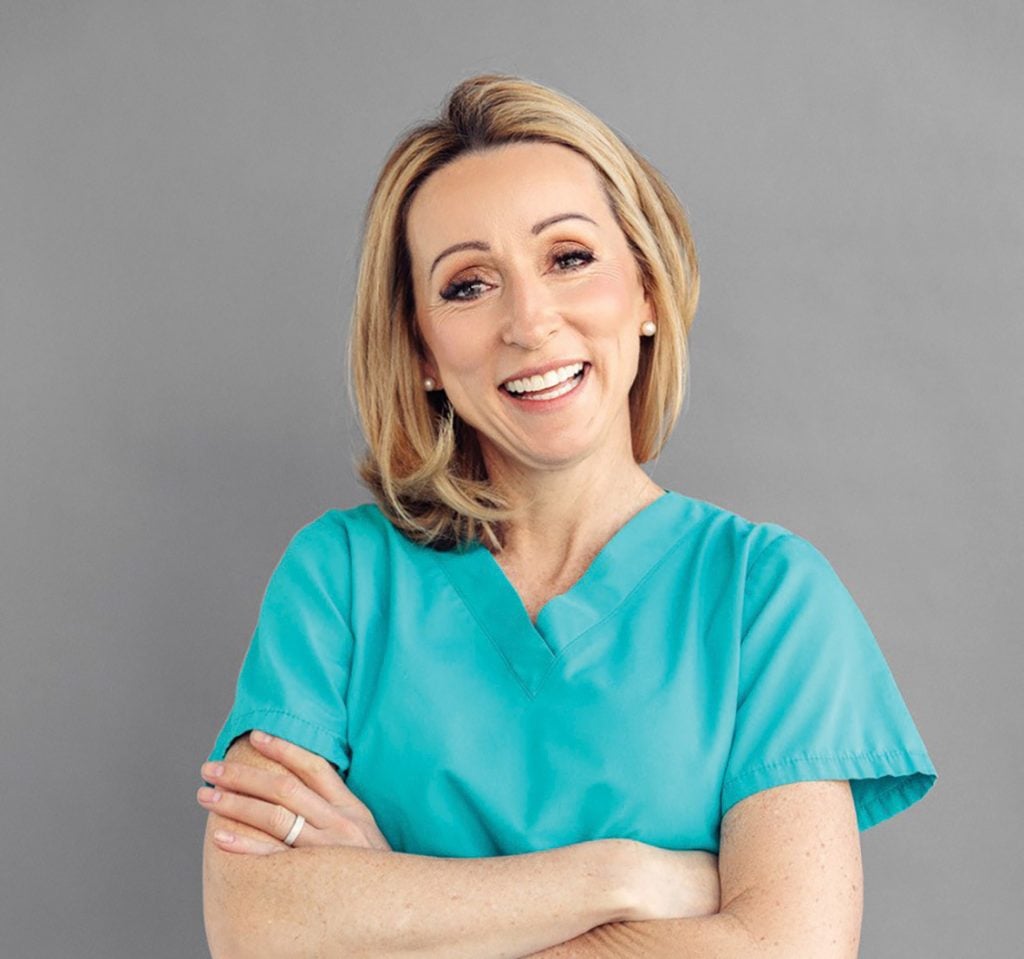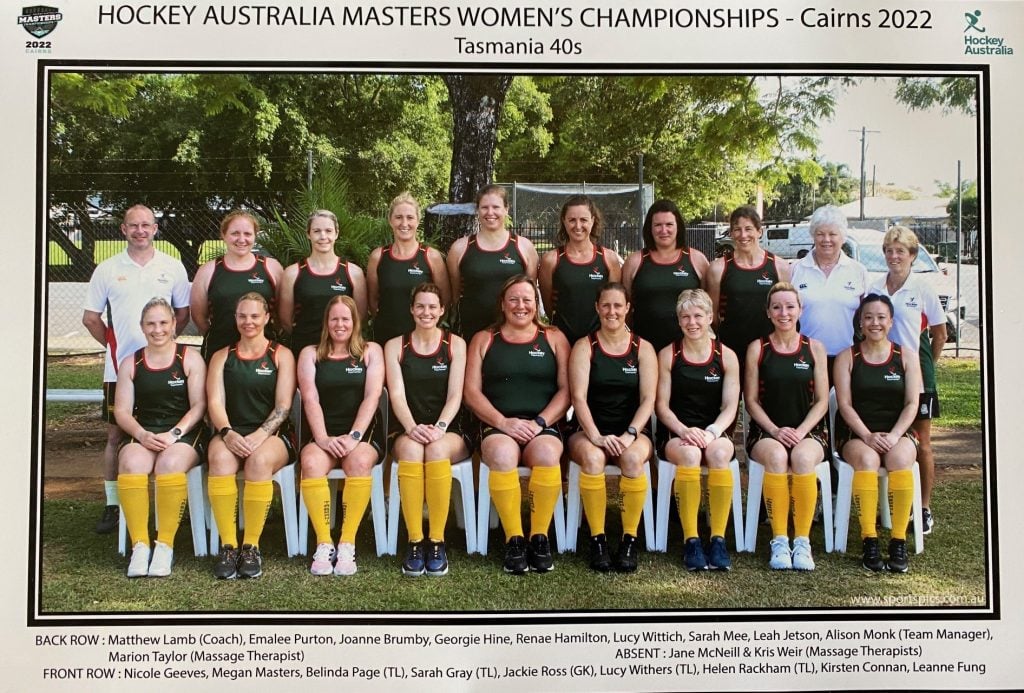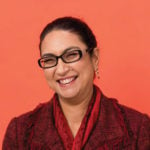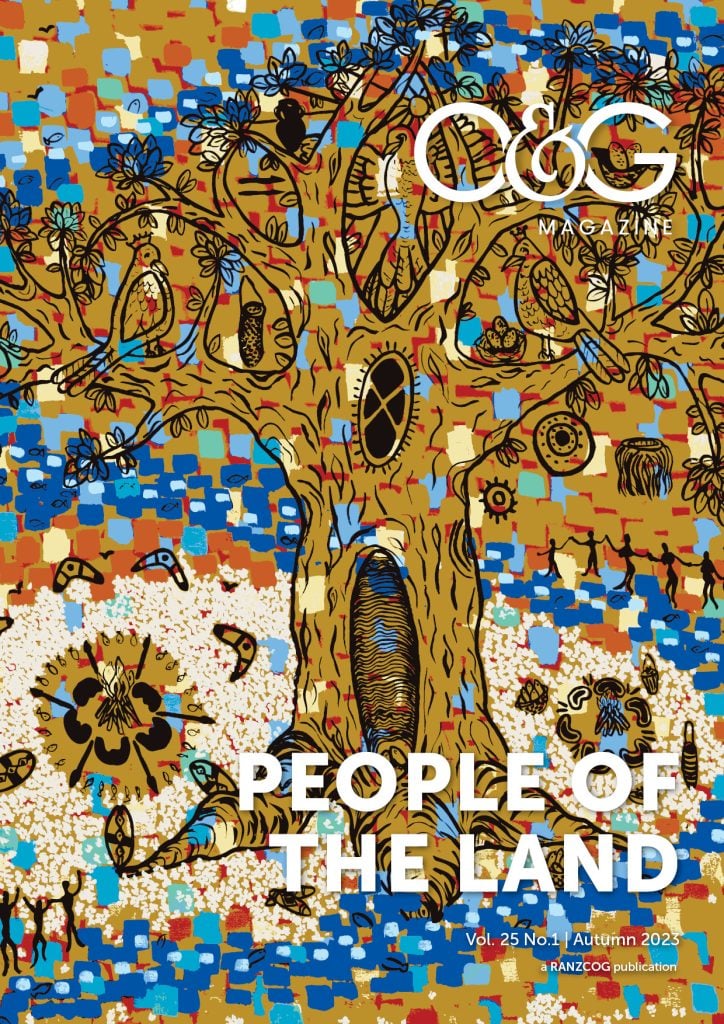This O&G Magazine feature sees Dr Nisha Khot in conversation with women’s health leaders in a broad range of leadership positions. We hope you find this an interesting and inspiring read. Join the conversation on Twitter #CelebratingLeadership @RANZCOG @Nishaobgyn
Dr Kirsten Connan
FRANZCOG
Welcome to the new year, and I hope all our readers have had some time to rest over the festive season. Dr Kirsten Connan is no stranger to readers of this column. In fact, she is the founder and the brains behind it and I have tried my best to carry on her legacy.
Many of you will also be familiar with Kirsten’s work on gender and leadership. This work, and her presentation as the Ella Macknight lecturer at the RANZCOG ASM 2018, was a clarion call to our profession to change the paradigm of leadership at all levels within O&G. It led to the setting up of the Gender Equity and Diversity Working Group (GEDWG) and Kirsten was the inaugural deputy chair of the GEDWG. The statistics on women’s participation in RANZCOG leadership speak for themselves1 but there is much more to achieve if we are to truly represent ALL the diversity of our membership. On that note, 2023 is an election year for RANZCOG. I urge you to watch out for announcements related to elections and volunteer to take on leadership roles at the College. This is OUR College, and we all belong equally.
However, I digress… Back to Kirsten who runs a busy private practice, TasWomen (by TasOGS), in Hobart, Tasmania. In 2016, she won the Telstra Tasmanian Business Women’s Entrepreneur Award for combining her clinical excellence with business excellence. She has just completed four years on the AGES (Australasian Gynaecological Endoscopy and Surgical Society) Board. She is an avid runner and a national level hockey player.
I hope you will enjoy getting to know the person behind some of the most interesting interviews to feature in this column.

Dr Kirsten Connan
Could you please tell me a bit about your childhood and early influences?
I was born in the Kingdom of Tonga in the Pacific to missionary parents. My parents had originally planned to go to Tonga for a year but ended up staying there for more than a decade. My early years in the Pacific can be best described as idyllic. I went to the only English primary school on the main island, Tongatapu. Pacific Islander culture laid the foundations of kindness, community, and connectedness that I have carried with me ever since.
Growing up in Tonga made me realise, at a very early age, the privileged position I enjoyed as an Australian and as a white person. I was part of a minority population in Tonga. Yet, I had so much more than the people of Tonga. I learned to recognise inequity and to question it very quickly. This set me up for the rest of my life where I have continued to question inequities.
When I was 12, we moved from Tonga to Pasadena, California where I lived for a few years. This move was a huge cultural shock. Those vastly different experiences of living in Tonga and America provided powerful lessons in adapting to change, embracing new relationships, and thriving in new environments.
How did you choose to study medicine?
I knew from a very early age that I wanted to work with people. I had a great affinity for science, and loved ‘caring’ for others. Medicine seemed like the perfect option.
I do not have anyone else working in healthcare in my immediate or extended family. To ensure my view of a doctor’s life was realistic, I spent some time doing clinical placements in my local hospital. I loved being in the clinical environment, I loved the teamwork, the continuous learning and evaluating, and the ability to combine practical hands-on work with academic work. I have not yet had any regrets with my choice (although sometimes the nights are very long)!
Why did you choose to specialise in O&G?
I had always assumed I would study paediatrics because I absolutely love babies and children. My paediatric term at Sydney University was just before the O&G term. I enjoyed the term at the Royal Children’s hospital, but it did not draw me in enough.
My next term was O&G. I loved everything about it! Working with women, the blend of surgery and medicine, and the fact that this essential healthcare could make such a difference for more than one generation. I also appreciated that women’s health was often neglected in under-resourced countries (as I had seen in Tonga), and I saw myself involved in aid work overseas in a very needed area.
I also love the physical aspect of O&G, running around the labour ward, and being in the operating theatre. I enjoyed the adrenaline rush that came from obstetrics and admired the physical demands and finesse I saw with surgery. If I had to go back in time and make a choice I would still choose O&G, even with the long hours, the highs and the lows, and the difficulty of combining parenthood. I feel very fortunate to have a career that I genuinely love.
You were a medical student in Sydney, and an O&G trainee in Melbourne. What made you choose to live and work in Tasmania?
Tasmania is a stunningly beautiful state. For us, the call to move from the mainland was to improve our ‘work and play’ balance. As hoped, the slower life of Tasmania has fostered our genuine connectedness with people, our chosen activities, and with nature here.
Why work in Tasmania? Tasmania is an impoverished state, and one with complex health problems and needs. We have held some of the highest preterm birth rates in Australia, some of the highest rates of teenage pregnancies, and some of the highest rates of smoking in pregnancy in Australia. Whilst committed doctors are changing this narrative, the clinical work remains incredibly fascinating and challenging. Plus, it’s usually an incredibly short commute to work!
Could you please tell our readers about your work around return to work practices after a baby?
I had two children during my training. My first was born when I was a third-year trainee and my second when I was a fifth-year trainee. I took just over 10 weeks off after the birth of my first daughter, and 14 weeks off after the birth of my second daughter.
Feeding my babies with breastmilk for 12 months was an important personal goal for me (while acknowledging that I am a proponent of a ‘fed baby’ and ‘healthy mum’ being the ideal).
Going back to work with fully breastfed babies was challenging, but not a reason not to try (at least not me). At the time I did not know of any trainees who had gone back to work in the same capacity, worked the same hours (98 hours in my first week back), and had managed to continue to feed their babies breastmilk for 12 months. Instead of seeing barriers, I saw this as an opportunity for change.
At the time the Royal Women’s Hospital in Melbourne didn’t have a breastfeeding room, staff breast pumps, or training structures to facilitate pumping during labour ward shifts or operating days. I was often pumping in toilet cubicles or behind doors. I decided it was time to change that – more out of necessity than anything else. I worked with the hospital to create dedicated spaces for pumping and feeding and looked at how we better supported trainee rosters for those pumping or feeding. At the time I did not recognise how fortunate we were to have this happen, and with minimal opposition (I was aware of other institutions who were less responsive). I remain very grateful to everyone who supported the changes during this time, and those who have continued to move this space further forward.
I also must mention my mum, and my nannies, who were incredible sources of support during these early months, often bringing my babies to work for feeds around my busy roster.
What led you to the study of gender and leadership?
I have always loved learning and I equally love teaching. As doctors we are expected to be able to teach. Some of us have a natural talent for it, but I suspect many of us would benefit from formal teaching education. I have always seen the value in having formal education underpinning professional skills and this led me to a Master’s in Clinical Teaching at the University of Melbourne.
The choice of studying gender and leadership was a happy rostering accident. At the time I was working in Darwin as a junior consultant, with both clinical and teaching responsibilities. The subject ‘Gender and Leadership’ was a good timetabling match, and much less of an interest. However, once the subject began, I was drawn in and found myself having multiple light bulb moments. My awareness of gender bias and discrimination, that had personally felt subtle (much of which, I appreciate now, was because it was ‘normalised’), was now clear and evident in medicine all around me. I became incredibly curious to learn how gender bias and discrimination was experienced by others around me. It was this curiosity that led me to do my Masters project on Gender and Leadership in O&G in 2018.
Please describe your own leadership journey for our readers.
I would describe myself as an introvert. However, when I feel strongly about a particular subject, I will always use my voice and advocate for change (so an introvert with moments of being an extrovert)!
My leadership journey has come about from a combination of hard work, planned and unexpected opportunities, and a desire to change or progress an environment, especially when it appears unequal or unjust.
Leadership is a huge privilege, but equally a huge responsibility. To ensure I am leading and supporting my team, board, or organisation in the most appropriate way, I have participated in multiple leadership courses, including the Australian Institute of Company Directors (AICD) foundational course, and Monash University’s Women in Leadership program. This year I am undertaking the Royal Australasian College of Medical Administrators’ (RACMA) Executive Leadership course.
One of my favourite opportunities with leadership is platforming others. I have had the fortune of some amazing mentors to guide me in my leadership journey, and platforming others is one way to express my gratitude for those who led before me.
What advice would you give to anyone who has leadership aspirations?
We are all leaders in different ways, so we should all embrace the privilege and responsibility that leadership brings, whether it be at home or at work.
Doing this however it not always easy. Finding good mentors is such a valuable key to successful leadership. You may need to have more than one mentor for the different roles you have, for example, you may have a mentor to guide you through the challenges of a private practice, another mentor might help facilitate your development as a surgeon, and another to aid your professional growth as a leader. Don’t limit your number of mentors.
Engaging in formal learning in the leadership space can be incredibly helpful in both understanding the principles that underpin effective leadership, as well as teach you non-clinical skills such as public speaking, chairing meetings, reconciling accounts, or performance appraising your board members.
One of the most important pieces of advice I have in leadership is to please open the leadership door for others, especially for those who are different from you, to ensure that we achieve both depth and breadth in leadership.
What changes have you witnessed in O&G and what does the future of O&G look like to you?
If I think too hard about that it makes me feel old!
I perhaps belong to one of the last cohorts of trainees who learned predominantly open surgery (abdominal and vaginal). The advent of laparoscopic surgery has been the single biggest change in O&G I witnessed during training. Within the first few years as a consultant, I realised that my practice would be mainly laparoscopic surgery and these days I rarely do any open surgery.
Another game-changer was noninvasive prenatal testing. It was a novel idea when I started in O&G training, and now is offered to all pregnant women (acknowledging the limitation of cost for many).
The future for O&G (and other specialities’) training will need to evolve. We should no longer train all O&Gs in the same way, while expecting them to work in vastly different environments. The skills required to be a rural generalist obstetrician-gynaecologist are very different from those required to be a city-based private obstetrician. I do feel RANZCOG continues to respond to our evolving workforce issues, but our best response will likely come if we all collectively grapple with these issues and together work out progressive solutions.
The question of splitting obstetrics from gynaecology (and vice versa) remains a valuable one. I am not yet settled on an answer.
The last two years have been challenging for all of us. Have you found some silver linings, and what have they been?
I am so very fortunate to be living in Tasmania. The impact of COVID-19 was not as far-reaching as seen in Victoria or New South Wales. We benefitted from the lessons learned from mainland Australia before we had our peak in December 2021.
As for silver linings, COVID-19 shone a light on healthcare. Not a silver lining, but a light on our struggling healthcare system, that I hope will now get the attention and investment it deserves.
On a personal level, COVID-19 was a reminder of the value I place on time. How I spend it, and the importance of time with family and close friends. Reducing the amount of travel was a silver lining as I had more time with my husband and daughters. However, I very much missed the connectedness of visiting family and friends, and the collegiality of colleagues at face-to-face conferences and board meetings (such as AGES). As a regional Fellow during the era of ‘living with COVID’, hybrid conferences might be the ‘silver lining’ I value most professionally.
How do you unwind?
My absolute favourite way to unwind is to run. I often have my best reset, as well as most creative and inspired ideas, when my mind is focused on simply putting one foot in front of the other.
I also now love playing Hockey, less so to unwind, but as a constant in my toolbox to maximise my mental health and physical wellbeing. I returned to the sport four years ago at the insistence of my oldest daughter (who is a Tasmanian state goalie) and her coach, an ex-Hockeyroo (Bianca Pritchard).
I have so deeply valued being back in a sports team (having last played at university, aged 19 years). I have found myself inspired to update my learning on nutrition, tactics, skills, mindset, as well as all things strength and fitness! Refreshingly, during my first season most of my teammates didn’t know what I did professionally, and I was simply teammate ‘KC’. At times my teammates have been a lifeline, and the sport a valued gift during difficult professional times. I have now also had the enormous privilege of representing my adopted state at the national level in the Australian Hockey Masters, and hope to do so for many years ahead.

Dr Kirsten Connan with her hockey team





Leave a Reply